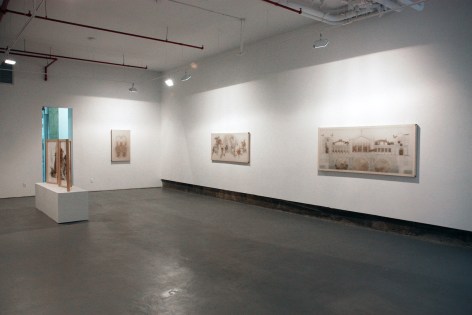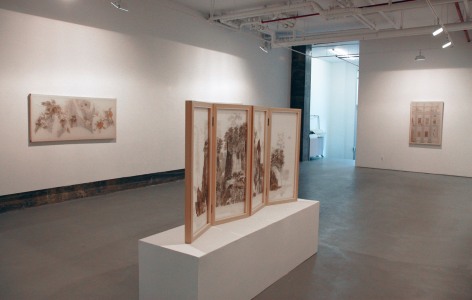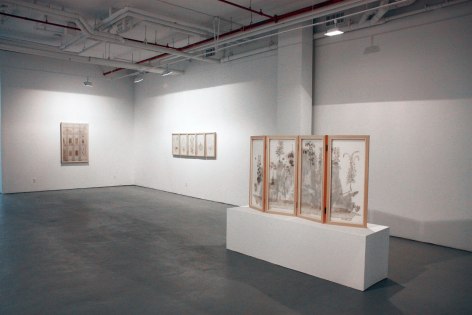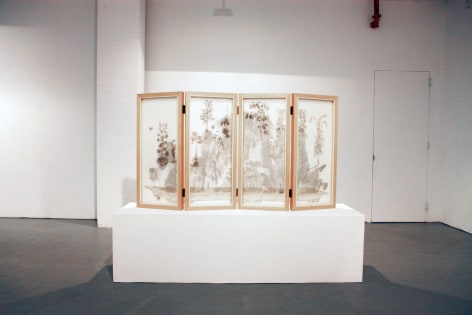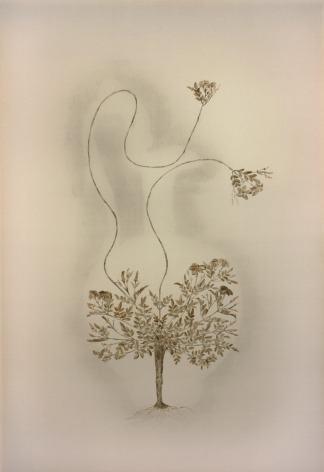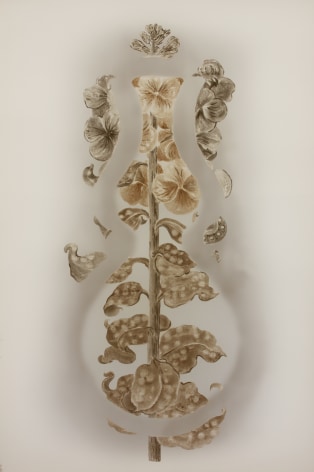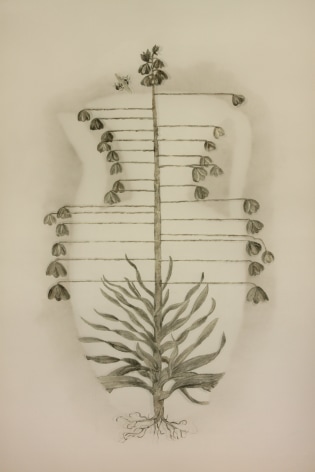Chambers Fine Art is pleased to announce the opening on September 15 of When Dust Settles by Su Zhighuang who was born in Guangzhou, China in 1983 and graduated from the Central Academy of Fine Arts, Beijing in 2009. For his first solo exhibition in New York, Su continues the investigation of dust as a medium that has characterized his work for the last two years.
In the Western world, dust has a wide variety of associations that range from the sonorous verses from the Book of Common Prayer used in funeral services to the “dust breeding “of Marcel Duchamp photographed so memorably by Man Ray. Su’s initial fascination with dust, however, began not with its metaphorical associations but from the daily experience of life in Beijing, a city undergoing rapid modernization. For his recently concluded exhibition at the Ullens Center for Contemporary Art (UCCA), Beijing, Su exhibited three series of works – Dust Tiles, tiles covered with dust collected from 256 locations in the Chaoyang district; Dust Insects and Dust Flowers inspired by Andy Warhol; and Dust Manual, a volume of 46 sketches based on images form the Mustard Seed Manual of Painting, the celebrated 18th century Chinese painting manual.
For the current exhibition Su widens the thematic material of his work to include not only the Chinese imagery that inspired his Dust Manual but botanical illustrations from the iconic Hortus Eystettensis of Basilius Besler first published in 1613. In addition there are references to European architectural manuals and western motifs such as the Adam and Eve of Albrecht Durer.
In his comments on the artist, Wu Jian’an draws a contrast between the Chinese approach to depicting the natural world in which the expression of feeling was the primary goal to the scientific attitude of Besler who recorded the physical appearance and characteristics of plants with extraordinary precision. In this new series of paintings, Su creates a series of imaginary encounters between the East and West, uniting them through the medium of dust. In this instance, dust is not a tiresome product of construction sites that clogs the lungs but an invisible force that creates connections between the most remote locations and phenomena.
Thus through the agency of dust, Chinese waves wash through the openings in a classical Western façade seventeenth century plants emerge from the rocks of a penjing (tray landscape). Tendrils of plants from the Chinese manual wittily conceal the private parts of Durer’s Adam and Eve while fragments of Besler’s flora take the form of Chinese vases. Su’s multi-layered paintings pay respect to the past while imagining how things might have been in a world united by dust.

